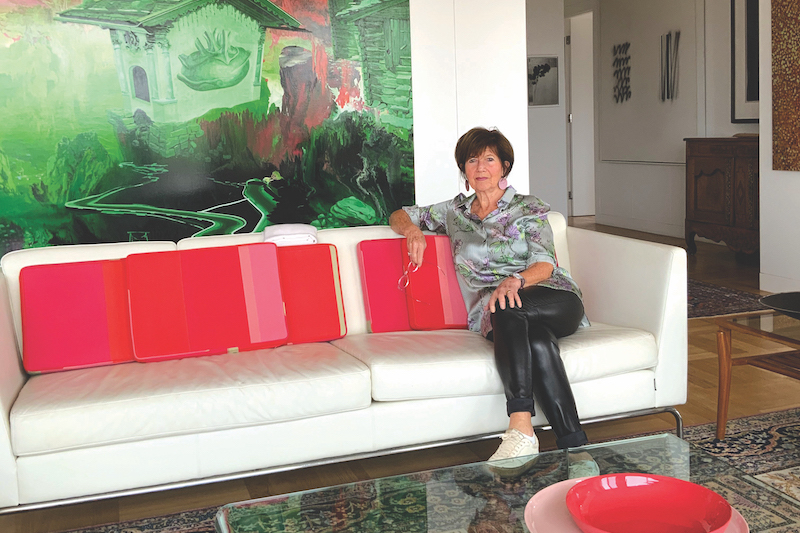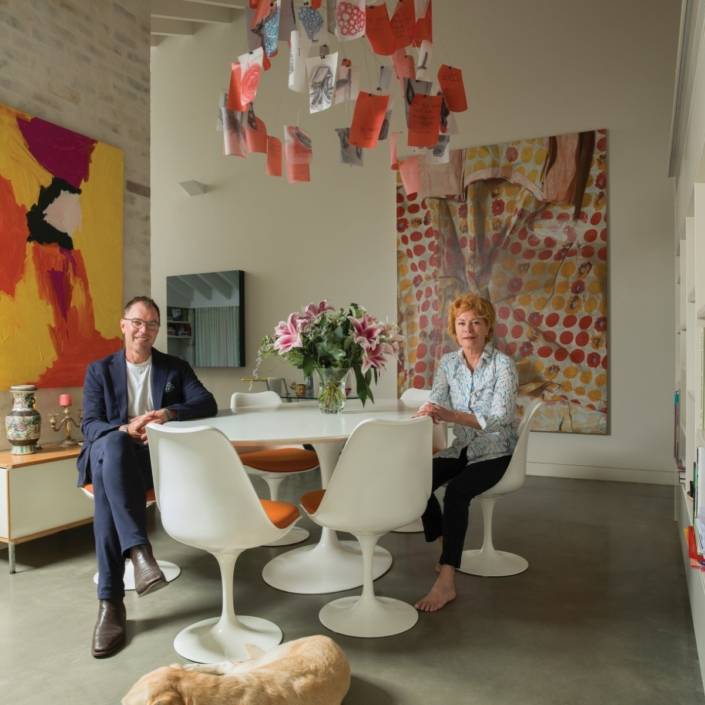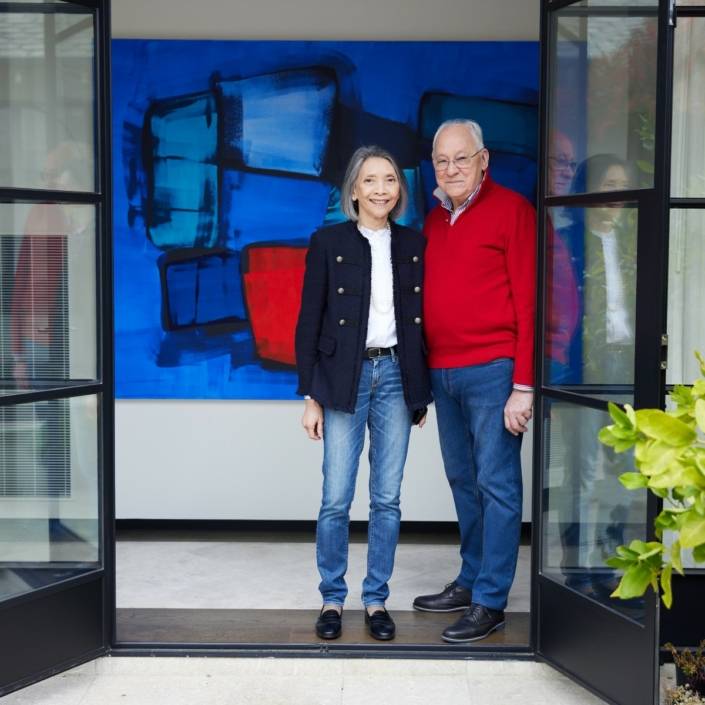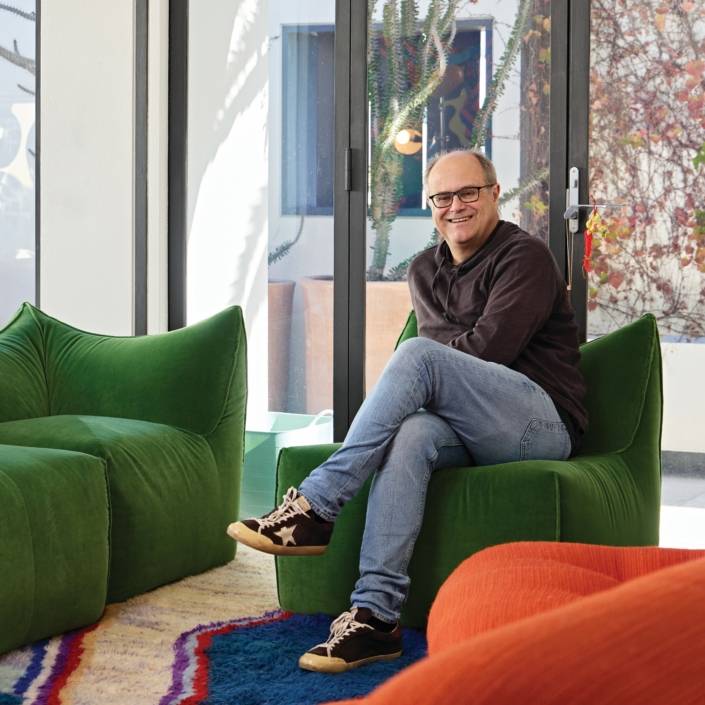Irene Sutton: The Art Life
Stalwart gallerist and collector Irene Sutton lives by the conviction that contemporary art matters.
Words: Robert Schubert
Portrait: John Sutton
Photography: Andrew Curtis
IRENE SUTTON has been a constant in the Australian art scene since she opened Sutton Gallery in Fitzroy, Melbourne, back in 1992. Recalling her reasons for leaving behind the security of a professional life in science as a pharmacology researcher, she notes that “contemporary art was a slow burn” via a post-graduate year in the Art History Department at Monash University. It was there that she gained a grounding in the history and thinking behind contemporary art, which gave rise to an understanding of how art relates to life.
What Sutton looks for in an artwork is informed by this mix of experience in art history and a solid conviction that contemporary art matters. “It’s not just that an artwork should look good, although beauty should never be discounted either,” she says. “An artwork has to have some heightened visual interest, something that pulls you into the work.” This has held her in good stead since she bought her first work by Vicki Varvaressos from Bill Nuttal in the 1980s.
It was never Sutton’s intention though to consciously build a collection. Really, she sees it as part of her broader business in representing and supporting artists. “Selling artwork is a nuanced business,” she says, and she’d prefer to see her artists’ work out in the world rather than in her own home. She makes an effort not to cherry pick works from her artists’ shows – with the rare exception of Raafat Ishak’s Acorn (2017) that she bought early because his paintings always sell quickly. She has three Ishak works now and still admires the fine lines of colour that form the contoured outline of his work, reminding her of similar techniques found in Chinese cloisonné.
Her collection holds many works from artists she has championed over the decades and is a testament to her longstanding commitment to the artists she represents, as well as the strength of her gallery stable. It includes Anne Ferran’s sumptuously theatrical Scenes on the death of Nature I & II (1986), juxtaposed with Gordon Bennett’s painterly Sleeping Man, Hanging Man (after Gober) (1993). Both works provide context for smaller sculptures by John Meade and Alex Danko.
Sutton’s long-term commitment to artists would also explain her collection’s eclecticism. It is an informal mix of large-scale paintings from the likes of Bennett, Stephen Bush, Vivienne Binns, Helen Johnson and Rosslynd Piggott, and smaller works on paper – like Eugene Carchesio’s rigorous Signs of Life (2004) and Danko’s sandblasted mirror In your Dreams (1996) – hung salon style. These are contrasted with Meade’s Progeny, an outdoor work installed on the balcony which Sutton describes as a sculptural onomatopoeia for “stride”. Other highlights include Helga Groves’ hand-woven fishing line in perspex Meltwater III (2003) and Nicholas Mangan’s Doom Drum (2005) which Sutton secured from an early exhibition at Gertrude Contemporary.
Not all of Sutton’s collection is fine art. Her home is also host to wonderfully preserved furniture by Krimper, whose custom-made pieces from the 1950s and 1960s helped define Australian modern design. These Sutton inherited from her aunt and uncle who, having migrated to Melbourne before her own family in the 1940s, had the foresight to commission Krimper’s now modernist classics celebrated in a retrospective at the National Gallery of Victoria in 1959.
And there’s cause to pause on an unintended confluence as Krimper’s sideboard now hosts a William Kentridge bronze Horse IV – both products of different political and geographical diasporas. Sutton’s eclecticism is followed through by artists in her collection that she does not represent. Most notably are the Scottish watercolorist David Austen’s whimsical male and female nudes purchased from Edinburgh-based Inglebury Gallery at an art fair, Bill Henson‘s Paris Opera Project (1990-91) and a significant group of Papunya Tula boards from 1971 and 1972. Emily Kame Kngwarreye’s Frosted Desert Grasses (1991) is particularly special.
Sutton’s collection is clearly the result of a deep and ongoing engagement with artists. And while she will admit to a preference for painting and works on paper, what matters to her most both personally and professionally is what motivates artists – and how their work operates on a very human level.
This article was originally published in Art Collector issue 94, October to December 2020.






